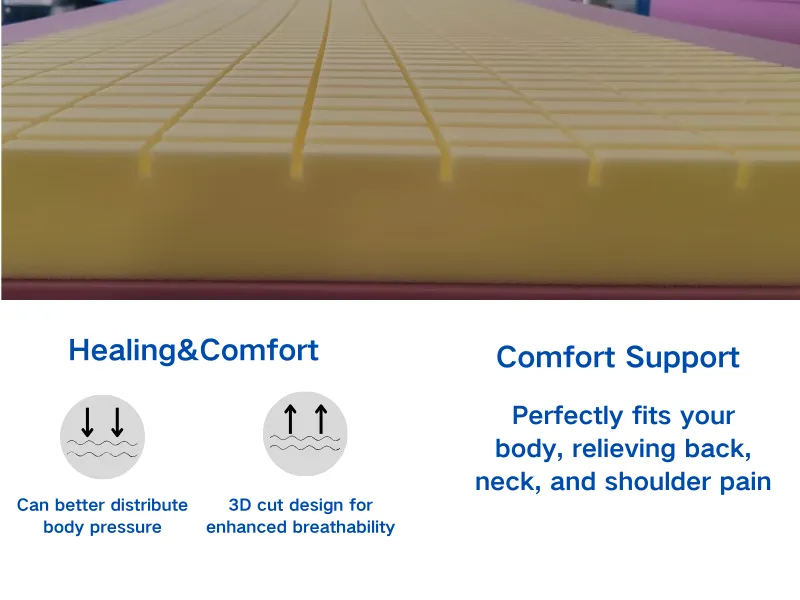Advancements in Pressure Injury Care Strategies in China for Improved Patient Outcomes
Understanding Pressure Injuries and Care in China
Pressure injuries, commonly known as bedsores or decubitus ulcers, are a significant health concern, particularly in healthcare settings where patients may be immobilized for extended periods. In China, as in many parts of the world, the increasing aging population and the prevalence of chronic diseases have placed greater emphasis on infection control and pressure injury prevention and management.
Pressure injuries occur when there is prolonged pressure on the skin, usually over bony areas, resulting in damage to the skin and underlying tissue. Factors such as immobility, poor nutrition, moisture, and friction contribute to the development of these injuries. The concern is particularly acute in hospitals and nursing homes, where patients with limited mobility are at risk.
Understanding Pressure Injuries and Care in China
The Chinese government has introduced several initiatives aimed at improving patient care standards across healthcare settings. Training programs for healthcare providers have been developed to equip them with the knowledge and skills necessary to identify, prevent, and treat pressure injuries effectively. This includes understanding risk assessment tools such as the Braden Scale, which helps clinicians evaluate a patient’s risk of developing pressure injuries based on various physiological factors.
china pressure injury care

Furthermore, hospitals are increasingly adopting evidence-based practices for pressure injury management. Regular skin assessments, repositioning schedules, and the use of specialized support surfaces, such as pressure-relieving mattresses and cushions, are being standardized to enhance patient care. Education is also crucial; caregivers and family members are being informed about the risks and signs of pressure injuries, enabling them to participate actively in the prevention process.
Nutritional support plays a vital role in pressure injury recovery and prevention. Inadequate nutrition can impair skin integrity and reduce healing capacity. Therefore, healthcare teams are focusing on offering proper dietary plans that ensure patients receive the essential vitamins and minerals necessary for skin health. This holistic approach considers not just the physical aspects of care but also the psychological well-being of patients, recognizing that emotional support can impact recovery.
In addition to hospital settings, home care and community health initiatives are gaining momentum. A significant portion of the Chinese population is cared for at home, especially among the elderly. Consequently, resources and training tools are being developed for family caregivers to help them understand pressure injury risks and prevention strategies in a home environment.
Challenges remain, however. The healthcare infrastructure in rural areas often lacks the resources and trained personnel necessary to effectively manage pressure injuries. Continued efforts to decentralize training, improve telemedicine, and develop community health programs are essential for addressing these disparities.
In conclusion, the landscape of pressure injury care in China is evolving, marked by increased awareness, training, and evidence-based practices. As the country strives to improve healthcare delivery, the commitment to preventing and managing pressure injuries will remain a critical component of quality patient care. By fostering a collaborative approach involving healthcare professionals, patients, and their families, China can enhance its strategies to minimize the incidence of pressure injuries, ensuring better health outcomes for its aging population.
-
The Effect of Coconut Foam Mattress Breathability and Humidity Regulation on Improving Sleep QualityNewsJul.03,2025
-
How Wave Mattress Systems Improve Blood Circulation During ImmobilityNewsJul.03,2025
-
The Climate-Adaptive Sleep Revolution: Exploring the Benefits of Cooling Gel Memory Foam MattressesNewsJul.03,2025
-
Exploration of the Role of Coconut Foam Mattress in Preventing Bedsores in the ElderlyNewsJul.03,2025
-
Comparing Wave Mattress and Air Mattress: Which Is Better for Medical Use?NewsJul.03,2025
-
Analysis of Comfort and Environmental Performance of Natural Latex and Coconut Foam MattressNewsJul.03,2025
-
Multi-Layer Construction for Enhanced Performance in Gel Mattress PadNewsJun.24,2025

